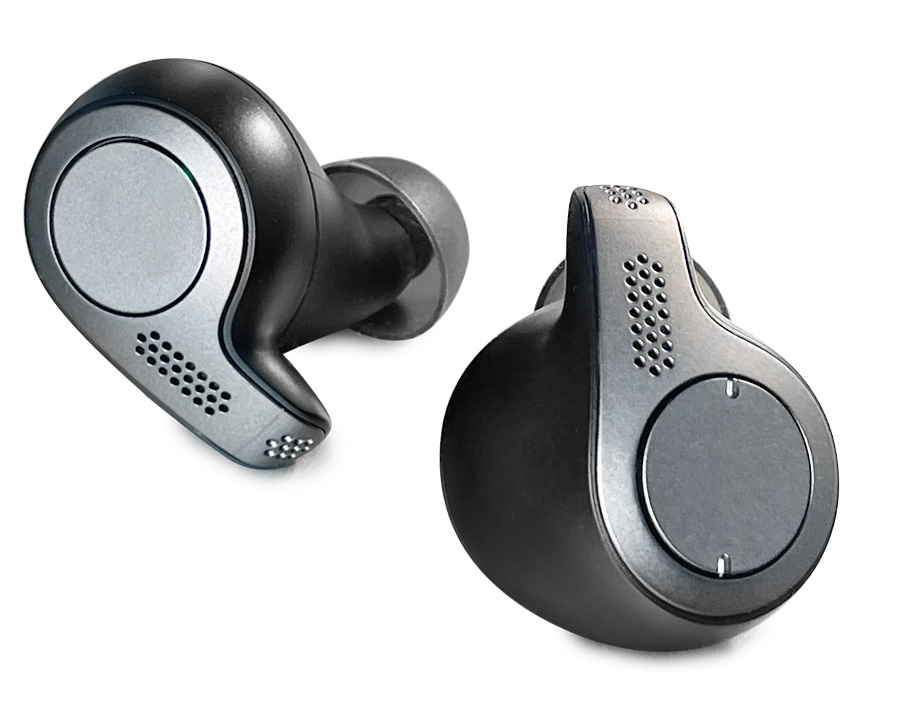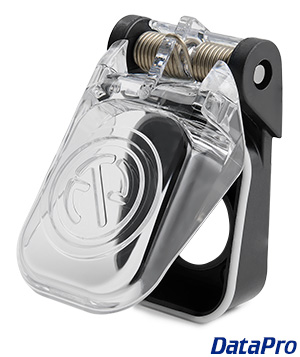 Ingress Protection or "IP" code evaluates the ability of a mechanical or electrical enclosure to resist the intrusion of dust, water, and accidental contact. It is published by the International Electrotechnical Commission as standard 60529. The IEC is an international organization representing 89 countries that helps create and publish standards for electronic and related technologies.
Ingress Protection or "IP" code evaluates the ability of a mechanical or electrical enclosure to resist the intrusion of dust, water, and accidental contact. It is published by the International Electrotechnical Commission as standard 60529. The IEC is an international organization representing 89 countries that helps create and publish standards for electronic and related technologies.
The aim of standard 60529 and IP ratings is to provide more detailed information about the capabilities of a product than terms like "waterproof" can provide.
Index:
- What are IP ratings?
- What IP rating is waterproof?
- What IP rating is rainproof?
- What's the difference between IP and NEMA ratings?
- What is the IP rating of Pelican cases?
- How does IP rating compare to BS 7671?
- What IP rating is appropriate for BS 7671-compliant bathroom fixtures?
- Full IP Rating Tables
More Information:
- Guide to UL Cable Ratings - Is it fireproof?
- IP Rated and Rugged Cables - All of our ruggedized and waterproof cables and accessories
- Pelican Case Services - We sell and modify Pelican cases for use as waterproof enclosures
What are IP ratings?
Ingress Protection or "IP" code evaluates the ability of a mechanical or electrical enclosure to resist the intrusion of dust, water, and accidental contact. The aim of IP ratings is to provide detailed information about the ruggedness of a product.A rating includes the letters "IP" and a two-digit numerical code. The first digit represents the enclosure's ability to resist the ingress of solids, and the second liquids. No resistance (or "no data provided") is indicated by a zero (0) or X.
| Rating | Solid Ingress Protection | Liquid Ingress Protection |
|---|---|---|
| 0 or X | Not rated or no rating supplied. | Not rated or no rating supplied. |
| 1 | Objects larger than 2in (50mm) to prevent accidental ingress by large body parts, branches, etc. | Dripping water (1mm (0.039in) in rainfall per minute). Enclosure is mounted in an upright position onto a turntable and rotated at 1 RPM for 10 minutes. |
| 2 | Objects larger than 0.5in (12.5mm) like rocks or fingers. | Dripping water when tilted at 15° (3mm (0.12in) in rainfall per minute). Enclosure is tested at an angle of 15° in each direction for 2.5 minutes each. |
| 3 | Objects larger than 0.1in (2.5mm) like small gravel or thick wire. | Spraying water from up to 60° from vertical for a period of 5 minutes. |
| 4 | Objects larger than 0.04in (1mm) like large sand or thin wires. | Spraying water from any direction for 10 minutes. |
| 5 | Protected against dust to such a degree that it does not interfere with the operation of the equipment. | Water jets (4.4psi) at a distance of 3 meters (9.8ft) for a minimum of 3 minutes. |
| 6 | Dust-tight - provides complete protection against dust, even with a vacuum inside the enclosure | Powerful water jets (15psi) at a distance of 3 meters (9.8ft) for a minimum of 3 minutes. |
| 7 | N/A | Immersion up to 1 meter (3ft 3 in) for 30 minutes, with the lowest point of the enclosure 1m (3ft 3 in) below the surface, or the highest point 150mm (5.6 in) below the surface, whichever is deeper. |
| 8 | N/A | Immersion in over 1 meter (3ft 3 in) to a depth and period of time specified by the manufacturer. |
| 9K | N/A | Powerful high-temperature water jets at 176°F for 3 minutes. |
Common IP ratings:
IP55
IP55 can often be found describing semi-rugged products like running headphones. They're reasonably well sealed against dust, and shrug off sweat and rain, but you wouldn't want to drop them in the sink.
IP65
An IP65 rating is typically found on products meant to withstand large amounts of falling or spraying water in the environment, but not actual submersion. For example household bathroom fixtures, or enclosures intended to be highly weather resistant. They are also fully dustproof.IP67
IP67 rated products are dustproof and can be fully submerged for up to 30 minutes in shallow water. This is a common rating for enclosures that are marketed as waterproof or weatherproof when stored, but aren't necessarily meant to be used underwater.IP68
IP68 products are usually designed for at least temporary operation while submerged in water, or long-term submersion when properly sealed with a cap or cover.What IP rating is waterproof?
IP68 is about as close as it comes to "waterproof" and will often be advertised as such. It indicates that the product is dustproof, and capable of being submerged for at least 30 minutes in 1 meter (3ft 3in) of water.What IP rating is rainproof?
IPx4 and up can be considered reasonably effective against rain. This level of ingress protection is tested by spraying water at the enclosure from all directions for 5-10 minutes.What's the difference between IP and NEMA ratings?
The National Electrical Manufacturers Association (NEMA) is an American organization that publishes standards for, among other things, electrical enclosures.NEMA's enclosure types address not only the enclosure's ability to protect its interior, but also how well it prevents a human operator from touching hazardous components. Other ratings involve not just water ingress but resistance to corrosion, oil, and ice.
Below is a generally accepted conversion between IEC IP and NEMA ratings:
| NEMA Enclosure Type | IEC Ingress Protection Rating |
|---|---|
| 1 | IP10 |
| 2 | IP11 |
| 3 | IP54 |
| 3R | IP14 |
| 3S | IP54 |
| 4 and 4X | IP56 |
| 5 | IP52 |
| 6 and 6P | IP67 |
| 12 and 12K | IP52 |
| 13 | IP54 |
What is the IP rating of Pelican cases?
Most Pelican cases are rated IP67 -- dust-tight, and capable of protecting against temporary immersion at depths up to 1m (3ft 3in).
How does IP rating compare to BS 7671?
The "British Standard" BS 7671 is the national standard for electrical installation in the UK, and contains a set of protection ratings against what they term "External Influences."These British Standard ratings roughly correspond with several of the IEC 60529's Ingress Protection ratings, "AD" being used to indicate protection against liquids, and "AE" indicating protection against solids. See chart below:
| BS 7671 Rating | IEC 60529 Equivalent | Protection Against |
|---|---|---|
| AD1 | IPX0 | Negligible protection |
| AD2 | IPX1 or IPX2 | Free falling water drops |
| AD3 | IPX3 | Spraying water from limited angles |
| AD4 | IPX4 | Splashing or spraying water from any direction |
| AD5 | IPX5 | Water jets from any direction |
| AD6 | IPX6 | Water waves |
| AD7 | IPX7 | Intermittent immersion |
| AD8 | IPX8 | Complete submersion |
| BS 7671 Rating | IEC 60529 Equivalent | Protection Against |
|---|---|---|
| AE1 | IP0X | Negligible protection |
| AE2 | IP3X | Small objects (2.5mm or larger) |
| AE3 | IP4X | Very small objects (1mm or larger) |
| AE4 | IP5X | Light dust |
| AE5 | IP5X or IP6X | Moderate dust |
| AE6 | IP6X | Heavy dust |
What IP rating is appropriate for BS 7671-compliant bathroom fixtures?
British Standard 7671 separates a bathroom into "zones." See chart below:| Zone | Description | Requirements |
|---|---|---|
| Zone 0 | Areas directly exposed to water like the inside of a bath or shower | IPX7 with a maximum electrical voltage of 12V |
| Zone 1 | Area above the bath or shower up to a height of 2.25m | IPX4, IPX5 of water jets are present |
| Zone 2 | Any area within 0.6m of Zone 1, or any sink area | IPX4 |
Full Rating Tables
An IEC Ingress Protection rating consists of two digits, representing its resistance to solid and liquid ingress. Below are full descriptions of each.Solid Ingress Protection
| Rating | Effective against |
|---|---|
| 0 | Will not prevent ingress of objects. |
| 1 | Objects larger than 2" (50mm) to prevent accidental ingress by large body parts, branches, etc. |
| 2 | Objects larger than 0.5" (12.5mm) like rocks or fingers. |
| 3 | Objects larger than 0.1" (2.5mm) like small gravel or thick wire. |
| 4 | Objects larger than 0.04" (1mm) like large sand or thin wires. |
| 5 | Protected against dust to such a degree that it does not interfere with the operation of the equipment. |
| 6 | Dust-tight - provides complete protection against dust, even with a vacuum inside the enclosure |
Liquid Ingress Protection
| Rating | Test | Conditions Simulated |
|---|---|---|
| X | No data available. | N/A |
| 0 | Will not prevent ingress of fluids. | N/A |
| 1 | Dripping water (1mm (0.039") in rainfall per minute). Enclosure is mounted in an upright position onto a turntable and rotated at 1 RPM for 10 minutes. | Accidental dripping water such as might be experienced indoors. |
| 2 | Dripping water when tilted at 15° (3mm (0.12") in rainfall per minute). Enclosure is tested at an angle of 15° in each direction for 2.5 minutes each. | Operation near a shower or sink. |
| 3 | Spraying water from up to 60° from vertical. Test is conducted with either a spray nozzle (10 liters (2.64 gal) per minute for a minimum of five minutes) or an oscillating tube ((0.7 liters (2.64 gal) per minute for a minimum of five minutes) . | Heavy rain. |
| 4 | Splashing water (spraying, really) from any direction for 10 minutes. | Interior of a shower, exterior of a boat. |
| 5 | Water jets (4.4psi) at a rate of 12.5 liters (3.3 gal) per minute, and a distance of 3 meters (9.8ft) for a duration of 1 minute per square meter (min. 3 minutes). | Driven rain, exterior of a vehicle. |
| 6 | Powerful water jets (15psi) at a rate of 100 liters (26.4 gal) per minute, and a distance of 3 meters (9.8ft) for a duration of 1 minute per square meter (min. 3 minutes). | Industrial cleaning. |
| 7 | Immersion up to 1 meter (3ft 3 in) for 30 minutes, with the lowest point of the enclosure 1m (3ft 3 in) below the surface, or the highest point 150mm (5.6 in) below the surface, whichever is deeper. | Accidental immersion in fresh water like a swimming pool. |
| 8 | Immersion in over 1 meter (3ft 3 in) to a depth and period of time specified by the manufacturer. | Conditions specified by the manufacturer. |
Looking for more information?
If you're looking for a specific waterproofing solution, please contact our Sales department!
Check out some of our other popular info pages:
If you're looking for a specific waterproofing solution, please contact our Sales department!
Check out some of our other popular info pages:









